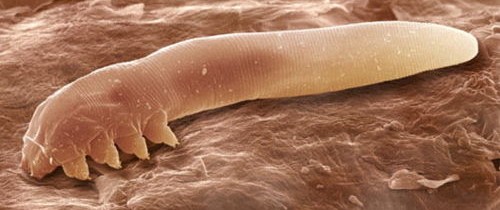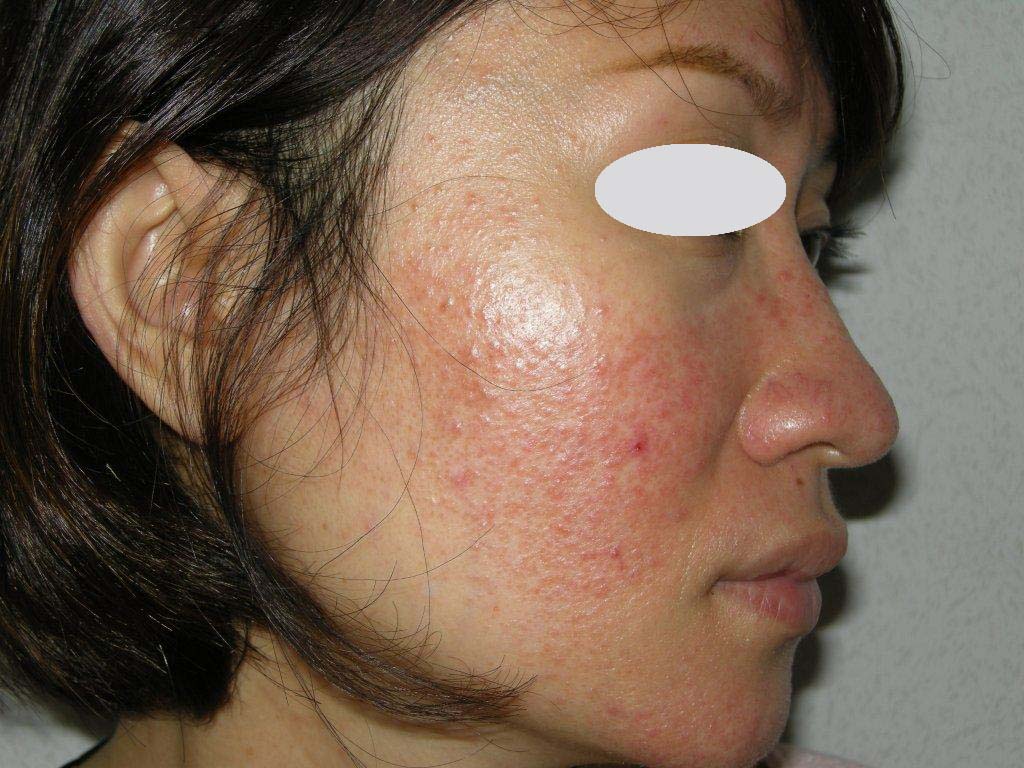The subcutaneous mite known as demodex is a parasite that lives in the sebaceous glands of humans. Infestation with this mite, called demodecosis, can cause unpleasant symptoms such as itching, inflammation and rashes on the skin. In this article, we will explain how to identify the subcutaneous mite, what causes contribute to its appearance, as well as how to effectively treat demodecosis and prevent re-infestation.
1. Causes of subcutaneous mites
The causes of subcutaneous mites can range from sebaceous gland disorders to hormonal changes and improper skin care.
Sebaceous gland disorder
Sebaceous gland disorders are one of the main causes of subcutaneous mites. Demodex mite feeds on the secretion of sebum, so its activity increases with excess sebum. This is often found in people with oily skin, as excessive sebum secretion creates favorable conditions for mite reproduction.
Hormonal changes
Hormonal changes can also contribute to the development of demodicosis. For example, during adolescence, pregnancy or menopause, when hormone levels fluctuate, the skin becomes more vulnerable. In such cases, it is important to monitor the condition of the skin and prevent excess sebum so that the subcutaneous mite cannot actively reproduce.
Improper skin care
Improper skin care is another cause of demodectosis. The use of poor quality or unsuitable cosmetics, neglecting regular skin cleansing or abusing aggressive cleansers can disrupt the natural balance of the skin and create conditions for the parasite to multiply.
2. Symptoms and signs of subcutaneous mite infestation

Symptoms of a subcutaneous mite infestation are often similar to other skin diseases, making it difficult to diagnose without seeing a specialist. However, there are several characteristic signs that may indicate demodecosis.
Rashes and itching
One of the first symptoms is the appearance of rashes on the skin, especially on the face. Often these rashes are accompanied by severe itching, especially in the evening and at night, since the subcutaneous mite is most active at night. Itching and redness are the body's reaction to the parasite, which causes skin irritation.
Redness and inflammation of the skin
Besides itching, redness and inflammation of the skin is another common symptom of demodecosis. The skin may become red, irritated, and sometimes covered with small blisters or blackheads. Inflammation of the skin in demodecosis is the immune system's response to the presence of the mite, resulting in unpleasant symptoms.
Blackheads and flaking
With a prolonged course of the disease, blackheads and flaking of the skin appear, as the mite destroys the structure of the skin, disrupts the sebaceous glands and causes inflammation. This condition often worsens without proper treatment.
3. treatment and prevention of hypodermic mites
Treatment of demodecosis requires a comprehensive approach. It is important not only to eliminate the symptoms, but also to affect the cause of the disease - the parasite itself.
 If a mite is detected, throw away mascara, eye shadow, powder, i.e. anything that has come into contact with the skin. Reduce contact with animals. Remember that mites are very difficult to get rid of.
If a mite is detected, throw away mascara, eye shadow, powder, i.e. anything that has come into contact with the skin. Reduce contact with animals. Remember that mites are very difficult to get rid of.
Medication treatment of subcutaneous mites
One of the most effective methods is medication treatment of demodecosis. Medications used to control the mite include anti-parasitic agents, antibacterial drugs, and anti-inflammatory ointments. Demodecosis ointments usually contain active ingredients that kill the mite and reduce inflammation.
Folk treatments
Folk methods for treating subcutaneous mites can be used as an aid, but should not replace medical treatment. Some people use masks based on clay, aloe or herbal infusions to relieve inflammation and itching. However, these methods may not completely eliminate the parasite.
Prevention and skin care after treatment
Once demodecosis is cured, it is important to follow a preventative and skin care regimen to prevent re-infection. Skin care after treatment should include regular facial cleansing, use of antibacterial products and avoiding oily cosmetics. You should also avoid excessive sun exposure and be sure to change your bedding and towels, as the mite may be on them.
Subcutaneous mite is an unpleasant and even scary enemy that can cause itching, inflammation and blackheads on the skin. However, knowing the causes of the subcutaneous mite and its symptoms, you can timely diagnose demodecosis and start treatment. Medication treatment of demodecosis, as well as proper skin care will help to get rid of the mite and restore the health of the skin. It is important to remember that prevention and skin care after treatment also play a key role in preventing re-infestation.
To prevent the skin from becoming sensitive, before treatment, you should restore the skin from dehydrationBecause all the medications that are used dry and irritate the skin. You can see the diagram here.
WARNING: Advice on the use of various substances, as well as any information on medications and treatments set forth on the site, cannot substitute for the advice of a qualified medical practitioner.






